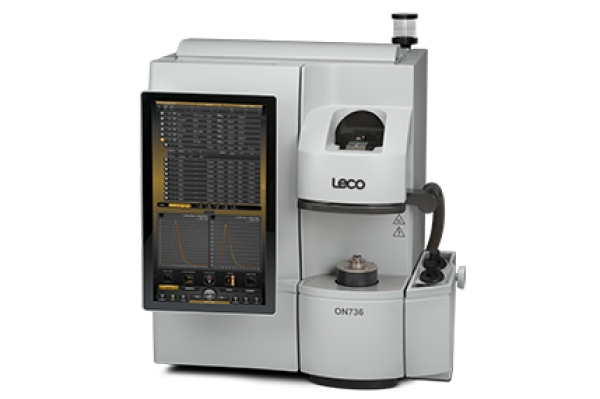736 Series Inert Gas Fusion: Oxygen and Nitrogen by Inert Gas Fusion
Transform your Oxygen and Nitrogen determination in inorganic materials, ferrous and nonferrous alloys, and refractory materials with our ON736 elemental analyzer. It features an easy-to-use, touchscreen Cornerstone® software, a high-performance detector design, and a number of optional, customizable features to provide the optimal solution for your lab.
Features
- High performance detector design
- Thermostatic construction protects from ambient temperature fluctuations
- Optimized emitter control and detection circuitry
- Choice of either argon and helium carrier gas
- Increase laboratory productivity with automation options
- Available autocleaner minimizes the need for manual cleaning between analysis
- 20-position shuttle loader for both crucibles and samples
- Boom-mounted touch-screen interface provides improved ergonomics and intuitive operation
State-of-the-art infrared (IR) detection for oxygen determination and thermal conductivity (TC) detection of nitrogen
Applications
The 736 series is ideal for the following applications: inorganic materials, ferrous and nonferrous alloys, copper, aluminum, and refractory materials.
Theory of Operation
The ON736 Oxygen/Nitrogen system is designed for simultaneous measurement of oxygen and nitrogen content of steel and other inorganic materials. The instrument features custom software designed specifically for touch operation.
A pre-weighed sample is placed in a graphite crucible which is heated in an impulse furnace to release analyte gases. Oxygen present in the sample reacts with the graphite crucible to form CO and CO2. An inert gas carrier, typically helium, sweeps the liberated gases out of the furnace and through a Mass Flow Controller. The gas then flows through a heated reagent, where the CO is oxidized to form CO2, and H2 is oxidized to form H2O. Oxygen is detected as CO2 using a non-dispersive infrared (NDIR) cell. CO2 and H2O are then scrubbed out of the carrier gas stream. A Thermal Conductivity (TC) detector is used to detect the remaining nitrogen.
The detection system is comprised of both NDIR and TC detectors. NDIR cells are based on the principle that analyte gas molecules absorb infrared (IR) energy at unique wavelengths within the IR spectrum. Incident IR energy at these wavelengths is absorbed as the gases pass through the IR absorption cells. TC detection takes advantage of the difference in thermal conductivity between carrier and analyte gases. Resistive TC filaments are placed in a flowing stream of carrier gas and heated by a bridge circuit. As analyte gas is introduced into the carrier stream, the rate at which heat transfers from the filaments will change producing a measurable deflection in the bridge circuit.
The concentration of an unknown sample is determined relative to calibration standards. To reduce interferences from instrument drift, reference measurements of pure carrier gas are made prior to each analysis.
736 Series Details

- ON736
Oxygen and Nitrogen Analyzer - N736
Nitrogen Analyzer - O736
Oxygen Analyzer
- Boom-Mounted Touch-Screen Interface
- Performance Packages
- Dual Mode Cooling
- Sample Autoloader
- Furnace Autocleaner
- Recirculating Chiller
Oxygen/Nitrogen in Refractory Metals and their Alloys [PDF] 高融点金属および合金中の酸素および窒素 [PDF]
736 Series [PDF] 736 シリーズ [PDF]
Explore Inorganic Consumables, Reference Materials and Standards

